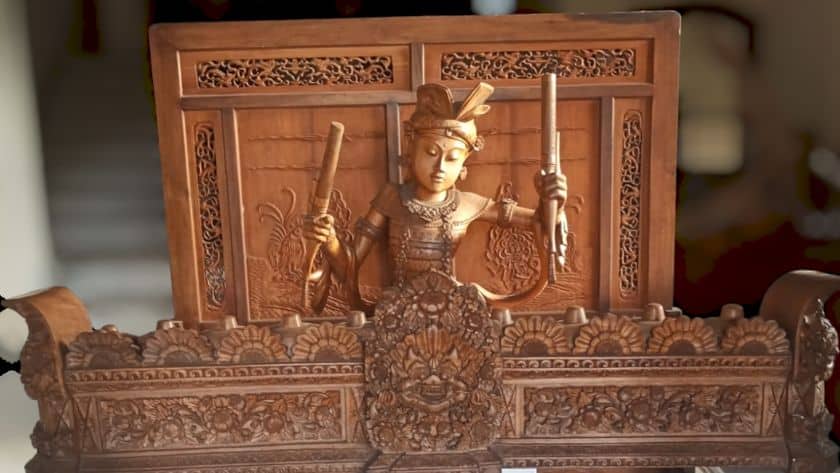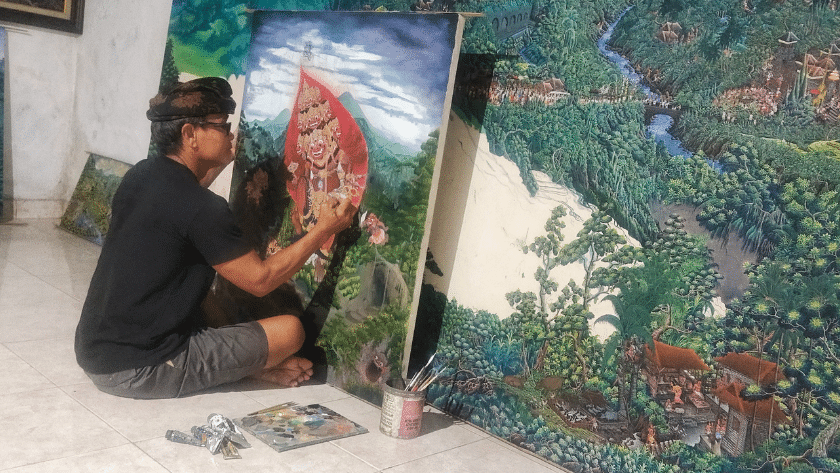Embracing Tradition
Bali, the island paradise of Indonesia, is renowned for its vibrant culture, breathtaking landscapes, and exquisite art forms. Among these artistic treasures, traditional wood carving stands out as a sacred craft deeply ingrained in Balinese heritage. For centuries, skilled artisans have meticulously carved intricate designs into wood, transforming ordinary pieces into masterpieces that embody the island’s spiritual essence. Let us delve into the rich history and profound significance of the art of sacred wood carving in Bali.Crafting Spiritual Masterpieces
Roots of Tradition.
SThe tradition of wood carving in Bali traces its roots back to ancient times when it served as a means of expressing devotion to the gods and honoring ancestral spirits. Initially, wood carving adorned temples, palaces, and sacred objects, reflecting the island’s deep spiritual connection. Over time, the craft evolved, encompassing a wide range of subjects including mythological figures, deities, animals, and intricate floral motifs.
Techniques and Materials
Bali’s wood carvers employ a variety of techniques passed down through generations, each requiring precision, patience, and a deep understanding of the material. Local artisans primarily utilize indigenous woods such as teak, mahogany, and sandalwood, known for their durability and natural beauty. Using traditional hand tools such as chisels, mallets, and knives, craftsmen carve, sculpt, and shape the wood with meticulous attention to detail, bringing their visions to life.
Symbolism and Spiritualism
Every carving in Bali carries profound symbolic meaning, reflecting the island’s unique blend of Hindu-Buddhist spirituality and animistic beliefs. From ornate door panels and intricately carved altars to ceremonial masks and sacred statues, each piece is imbued with spiritual energy and intended to evoke reverence and awe. Many carvings depict mythological scenes from Hindu epics such as the Ramayana and the Mahabharata, serving as visual narratives that resonate with believers and visitors alike.

Preservation and Innovation
Despite the challenges posed by modernization and globalization, Bali’s wood carving tradition remains resilient, thanks to the efforts of dedicated artisans and cultural preservation initiatives. While honoring ancient techniques and motifs, contemporary wood carvers also embrace innovation, experimenting with new styles, materials, and designs to keep the art form relevant in the modern world. By combining traditional craftsmanship with contemporary creativity, they ensure that Bali’s wood carving legacy continues to thrive for generations to come.
Techniques and Materials
Beyond its aesthetic beauty, wood carving plays a vital role in Bali’s cultural identity, serving as a link between past and present, tangible and intangible heritage. The intricate carvings adorning temples, homes, and public spaces serve as reminders of the island’s rich cultural tapestry and spiritual heritage. Moreover, the craft provides a source of livelihood for countless Balinese families, sustaining local economies and fostering community pride.
Honoring Heritage, Inspiring Future
At the end, the art of sacred wood carving in Bali is more than just a craft; it is a living testament to the island’s spiritual and cultural heritage. Through centuries of dedication and devotion, Balinese artisans have preserved this ancient tradition, infusing it with profound meaning and timeless beauty. As we marvel at the intricate carvings that adorn temples, homes, and galleries across the island, let us appreciate the skill, passion, and spirituality that breathe life into each masterpiece. By embracing and supporting Bali’s wood carving heritage, we not only honor the past but also ensure a vibrant future for this cherished art form.

